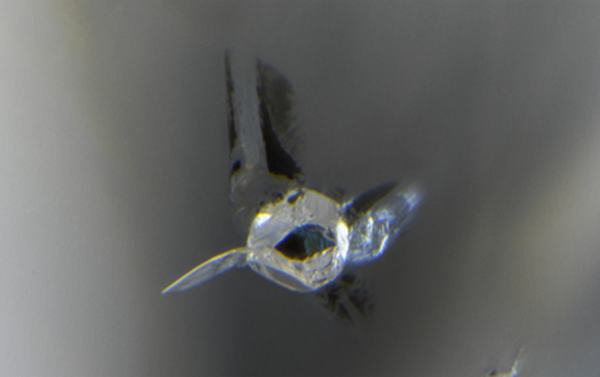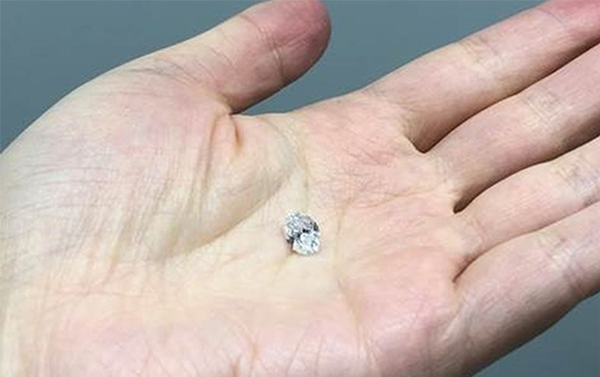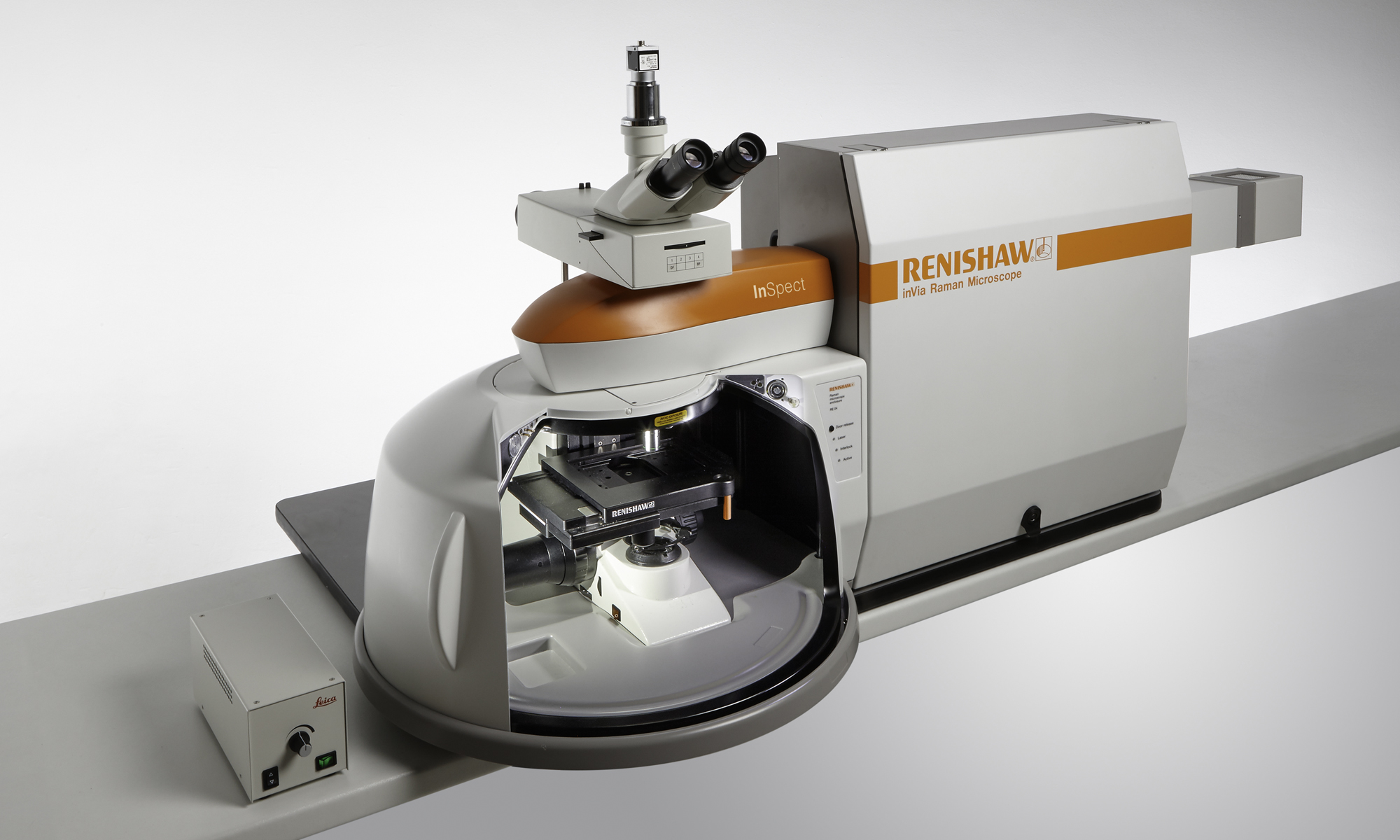Denna sida finns för närvarande inte på ditt språk. Du kan
översätta
den automatiskt
med Google Translate. Vi ansvarar inte för att tillhandahålla denna tjänst och
vi har inte kontrollerat översättningsresultaten.
Kontakta oss om du behöver ytterligare hjälp.
Raman spectroscopy confirms an ocean's worth of water in the Earth's lower mantle
In recent years, Renishaw Raman microscopes located at two prestigious geological institutions, have been used for the non-destructive analysis of inclusions in ultradeep diamonds from the Earth's lower mantle. Diamond inclusions are an important chemically inert vessel, preserving the original structure and chemistry of mineral fragments formed under high pressure. Petrological studies using Raman spectroscopy have produced an increasing body of evidence confirming that large amounts of water exist in the Earth's mantle.
How much water exists within the Earth?
The water content in the Earth's mantle is critical to the dynamics of the Earth's interior.1 Water lowers the internal friction of rocks and plays a key role in geological phenomena such as earthquakes, water weakening, dehydration embrittlement, fracturing, and mantle convection. Accurate quantification of the water content in the Earth's mantle is important, as a small deviation can significantly change our understanding of geological processes. Deep in the Earth, a discontinuity occurs between the mantle transition zone and the lower mantle. Scientists can detect this global 660 km boundary by the abrupt changes in density and seismic wave velocities. Few samples exist from the 660 km boundary, so the chemical composition of these different depths is still debated. Questions remain about whether volatile chemicals like water can move across the transition zone boundary into the lower mantle. Understanding the flux of water across this boundary also informs our understanding of the global water cycle.
First hints of a hydrous transition zone in the Earth's mantle
In 2013, terrestrial ringwoodite was discovered within a diamond inclusion from Juina, Brazil.1 Ringwoodite is a high-pressure phase of (Mg,Fe)2SiO4. Ringwoodite has the same chemical composition as olivine, but with a spinel structure, due to increased pressure. The spinel structure of ringwoodite enables it to store a massive amount of water in the Earth's mantle. Previously, ringwoodite had only ever been synthesized in laboratories or observed in meteorites. Raman spectroscopy of terrestrial ringwoodite was first performed at the Geoscience Institute, Goethe University, Germany, using a Renishaw RM1000 Raman microscope. This identified the diamond inclusion as ringwoodite from the 660 km boundary. Next, Fourier transform infrared (FTIR) spectroscopy indicated approximately 1.5% water content, which approaches water saturation within the transition zone. At the time, it was unclear if the hydrous content from this sample is broadly representative of the transition zone.

Figure 1 | Photomicrograph of an inclusion within a type IaB gem diamond from the Karowe mine, Botswana. The inclusion is embedded in the diamond below the surface, containing the assemblage of hydrous ringwoodite + enstatite + ferropericlase. Photo by Dr Tingting Gu.

Figure 2 | The 1.5 ct diamond studied. Photo by Dr Tingting Gu.
More recently, an inViaTM confocal Raman microscope at the Gemmological Institute of America was used to analyse a rare IaB gem diamond from the Karowe mine in Botswana.2 Ringwoodite was identified based on the asymmetric (T2g) and symmetric (A1g) stretching of SiO4 tetrahedra at 803 and 839 cm-1, respectively. Additionally, the same Raman spectrum detected bands at 3673 and 4090 cm-1 which are due to O-H and H-H stretching modes present in the lattice structure of ringwoodite. Significantly, polyphasic inclusions of ringwoodite [(Mg,Fe)2SiO4], ferropericlase [(Mg,Fe)O] and low-Ni enstatite [MgSiO3] were observed for the first time, as shown in Figure 1.4 The equilibrium of these coexisting phases was used to calculate the temperature and pressure when these minerals were formed. The petrological analysis of this and other nearby inclusions shows that the ringwoodite originates in a water-saturated environment near the 660 km boundary. This latest work indicates a more broadly hydrated transition zone across the 660 km discontinuity and into the lower mantle.
Summary
Raman microscopy of ringwoodite fragments from the 660 km boundary confirms a far higher water content across the Earth's mantle when compared to previous estimates using electrical conductivity and seismic tomography.1 We possibly have an ocean or two of water far below us, deep in the vast and enigmatic Earth.
Links and references
1. Review article: The role of water in Earth's mantle | National Science Review | Oxford Academic (oup.com)
2. First observation of ringwoodite within an ultradeep diamond inclusion: Hydrous mantle transition zone indicated by ringwoodite included within diamond | Nature
3. Raman analysis of polyphasic inclusions within a ultradeep diamond: Hydrous peridotitic fragments of Earths mantle 660?km discontinuity sampled by a diamond | Nature Geoscience
4. Dr Tingting Gu discusses her initial observations of ringwoodite in a coloured diamond inclusion: A frozen footage of Earths mantle boundary at 660 km captured by a gem diamond | Nature Portfolio Earth and Environment Community

Further reading
We have a whole range or articles, case studies and news stories about Raman spectroscopy.

About the inVia microscope
Discover more about how the inVia confocal microscope is suitable for your organisations applications.